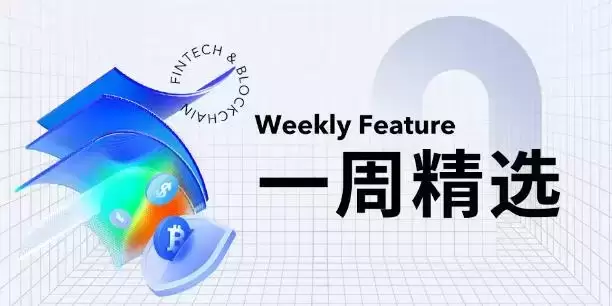 |
|
 |
|
 |
|
 |
|
 |
|
 |
|
 |
|
 |
|
 |
|
 |
|
 |
|
 |
|
 |
|
 |
|
 |
|
量子計算研究和倡導公司Project Vection已經啟動了Q-Day獎,這是一項全球競賽,提供1比特幣(BTC),可以使用Shor的Algorithmhor's Algorithmithmto網絡,以打破橢圓形曲線加密(ECC)密鑰,這是確保比特幣網絡的密碼。

A quantum computing research and advocacy firm, Project Eleven, has announced the Q-Day Prize, a global competition offering 1 bitcoin (BTC) to the first team to break an elliptic curve cryptographic (ECC) key using Shor's algorithm on a quantum computer.
一家量子計算研究和倡導公司,第11項目宣布了Q-Day獎,這是一項全球競賽,向第一支球隊提供了1個比特幣(BTC),以使用Shor的算法在量子計算機上打破橢圓曲線加密(ECC)密鑰。
The firm launched the competition on April 5, 2023, and teams have five years to complete the task, with the deadline set for April 5, 2028.
該公司於2023年4月5日啟動了比賽,團隊有五年的時間來完成這項任務,截止日期定於2028年4月5日。
The firm is also highlighting the potential threat posed by quantum computers to the Bitcoin network, with Project Eleven calculating that more than 10 million bitcoin addresses have non-zero balances and are potentially at risk of quantum attacks.
該公司還強調了量子計算機對比特幣網絡構成的潛在威脅,其中11個計算機計算得出,超過1000萬比特幣地址具有非零餘額,並且有可能有量子攻擊的風險。
"We just launched the Q-Day Prize. 1 BTC to the first team to break a toy version of Bitcoin’s cryptography using a quantum computer," the firm said.
該公司說:“我們剛剛啟動了Q-Day獎。1BTC使用量子計算機打破比特幣的加密版的玩具版本。”
"After 5+ years of research, we can now break a toy version of Bitcoin’s cryptography using a quantum computer. But to do so, we need to use elliptic curve cryptography (ECC), which is different from the cryptography used in Bitcoin today."
“經過5年以上的研究,我們現在可以使用量子計算機打破比特幣加密的玩具版本。但是,為此,我們需要使用橢圓曲線密碼學(ECC),這與當今比特幣中使用的密碼學不同。”
Project Eleven said that to make the competition a "level playing field," it had created a "toy version" of Bitcoin’s cryptography using ECC, adding that the goal was to break the ECC key and recover the private key for an address on a testnet.
第十一項目表示,為了使競爭成為“水平競爭環境”,它使用ECC創建了比特幣加密術的“玩具版本”,並補充說,目標是打破ECC密鑰並恢復測試網上地址的私鑰。
"We will provide a copy of the quantum algorithm used to break the key, and we will donate 1 BTC to the first team to succeed."
“我們將提供用於打破鑰匙的量子算法的副本,我們將向第一支球隊捐贈1 BTC以取得成功。”
The firm's research and advocacy efforts are focused on raising awareness of the potential impact of quantum computing, which has the potential to revolutionize various industries.
該公司的研究和倡導工作的重點是提高人們對量子計算的潛在影響的認識,這有可能徹底改變各種行業。
Project Eleven said that quantum computers could pose a threat to blockchain networks if they become powerful enough to break the cryptographic algorithms used to secure them.
第十一項目說,如果量子計算機變得足夠強大以破壞用於保護它們的加密算法,則可能對區塊鍊網絡構成威脅。
"We believe that it is important to continue to research and develop quantum computing technologies, but we also believe that we need to be aware of the potential risks involved," the firm said.
該公司說:“我們認為,繼續研究和開發量子計算技術很重要,但我們也認為我們需要意識到所涉及的潛在風險。”
"We are grateful to the members of the Bitcoin community who have contributed to this discussion and who are working to develop solutions to the challenges posed by quantum computing."
“我們感謝比特幣社區的成員,他們為討論做出了貢獻,並致力於為量子計算帶來的挑戰開發解決方案。”
The Bitcoin community is aware of the quantum computing threat and is working on solutions.
比特幣社區意識到量子計算威脅,並正在開發解決方案。
A Bitcoin Improvement Proposal (BIP), titled Quantum-Resistant Address Migration Protocol (QRAMP), was introduced earlier this year, which suggests enforcing a network-wide migration to post-quantum cryptography to safeguard Bitcoin wallets. This would require a hard fork, however, and getting that sort of consensus would be an uphill battle.
今年早些時候推出了比特幣改進建議(BIP),標題為抗量子的地址遷移方案(QRAMP),這表明強制執行範圍內的範圍遷移到Quantum Cryptography以保護比特幣錢包。但是,這將需要一個艱難的叉子,並且達成共識將是一場艱苦的戰鬥。
Quantum startup BTQ has also proposed its own solution: a quantum-based alternative to Bitcoin's Proof of Work called Coarse-Grained Boson Sampling (CGBS).
量子啟動BTQ還提出了自己的解決方案:一種基於量子的替代比特幣的工作證明,稱為粗粒玻色子採樣(CGB)。
CGBS works by using quantum computing to generate unique patterns of photons (light particles called bosons), replacing traditional mining puzzles with quantum-based sampling tasks for validation. But this also requires a hard fork, and the appetite for such a change isn't yet known.
CGB通過使用量子計算來生成光子的獨特模式(稱為玻色子)的獨特模式,從而用基於量子的採樣任務來代替傳統的採礦難題。但這也需要堅硬的叉子,而且對這種更改的胃口尚不清楚。
免責聲明:info@kdj.com
所提供的資訊並非交易建議。 kDJ.com對任何基於本文提供的資訊進行的投資不承擔任何責任。加密貨幣波動性較大,建議您充分研究後謹慎投資!
如果您認為本網站使用的內容侵犯了您的版權,請立即聯絡我們(info@kdj.com),我們將及時刪除。
-

- 如果特朗普的關稅侵蝕了美元的全球至高無上,比特幣(BTC)可以作為通貨膨脹對沖
- 2025-04-19 13:05:13
- 世界上最大的加密貨幣比特幣(BTC)可以用作通貨膨脹對沖
-

-

-

-

-

- 隨著鯨魚活動激增,Dogecoin(Doge)價格預測
- 2025-04-19 12:55:13
- Dogecoin的價格目前正在努力突破鯨魚活動的顯著阻力
-

-

- 內容硬幣與模因硬幣真的不同嗎?
- 2025-04-19 12:50:13
- 內容硬幣是一種新的趨勢,在加密貨幣領域,尤其是在基礎上引起關注。它們被定位為具有文化驅動的價值的數字內容
-

- 隨著XRP ETF批准的預期
- 2025-04-19 12:45:13
- XRP ETF充當穩定價格上漲的燃料Altcoin的價格預計即將達到9美元





























































